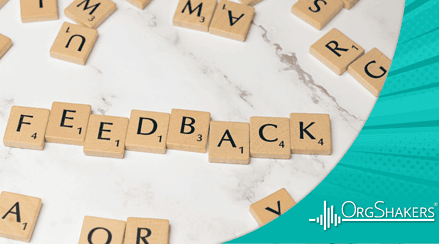Menu

Building a Smarter HR Strategy: Turning People Insights into Business Impacts
Every successful organisation understands one simple truth – people drive performance.
Yet too often, HR is still seen as an administrative function rather than a strategic force. When human resources operates purely at a transactional level, it limits both people and business potential. A well-defined HR strategy changes that, transforming human capital into a true competitive advantage.
What is an HR Strategy?
An HR strategy is a roadmap that aligns people initiatives with business goals. It focuses on solving organisational challenges through people-centric solutions – attracting, developing, engaging, and retaining the talent that fuels growth.
Rather than simply managing payroll or compliance, strategic HR shapes long-term success by ensuring the right people are in the right roles, with the right support, at the right time. It also establishes HR as a key decision-maker in areas such as workforce planning, culture, and leadership development.
At its core, HR strategy is about moving from administration to anticipation – using insight and planning to position people at the centre of business performance.
Why Does HR Strategy Matter?
Without a defined human capital strategy, HR remains reactive – solving short-term problems rather than driving long-term outcomes. The difference between transactional and strategic HR can be the difference between steady growth and stagnation.
Consider two companies planning to expand into a new market:
- The strategic company involves HR from the start. HR analyses the target region’s labour laws, salary expectations, and talent availability, then builds a plan to recruit and retain skilled workers.
- The transactional company assigns hiring to an overstretched manager with no local knowledge, leading to hiring delays, compliance issues, and higher turnover.
By giving HR a voice in strategic decision-making, the first organisation turns workforce insight into a competitive edge. That’s why a comprehensive HR strategy matters for your organisation.
How to Build a Strategic HR Plan
Creating an effective HR strategy starts with understanding the current state of your workforce – and where it needs to be. Here’s a step-by-step process HR leaders can follow:
1. Understand the Business Objectives
Begin with the big picture. Meet with executives and department heads to understand the organisation’s goals, challenges, and growth ambitions. Every HR initiative should directly support these objectives.
2. Evaluate Workforce Capabilities
Review performance data, skill matrices, and training records. Identify existing strengths and where capability gaps may limit business success.
3. Conduct a Gap Analysis
Compare your current workforce to the skills and competencies the organisation will need in the next 1–3 years. Are there areas where reskilling, upskilling, or external hiring is required?
4. Assess and Refine Talent Strategy
Audit your recruitment, compensation, and retention strategies. Are you competitive in the market? Do your benefits and culture reflect what today’s talent values most?
5. Develop and Retain Existing Talent
Your next high performer may already work for you. Identify employees ready for new challenges and invest in their professional development through coaching, mentoring, and succession planning.
6. Monitor Turnover and Engagement
Employee retention isn’t just about satisfaction – it’s about alignment. Use engagement surveys and exit interviews to identify why people leave and where improvements can be made.
7. Plan for Succession
Unplanned departures can derail progress. Map out key positions and identify potential successors to ensure business continuity.
8. Leverage People Analytics
HR data tells a story. Analyse trends in turnover, absenteeism, compensation, and engagement to make evidence-based decisions that improve efficiency and culture.
9. Define Your HR Mission and Vision
Summarise your strategy in a clear, inspiring statement. This should reflect your HR philosophy and serve as a guiding principle for all decisions going forward.
The Benefits of Strategic HR
When HR strategy is integrated with business strategy, the results are measurable and lasting:
- Increased ROI: Budgets are allocated to initiatives that deliver the greatest impact.
- Stronger Talent Pipelines: Proactive workforce planning ensures you’re prepared for future needs.
- Improved Retention: Employees who see clear development paths stay longer and perform better.
- Stronger Culture: Aligning HR with company values builds engagement and purpose across teams.
- Smarter Decision-Making: Data-driven insights replace assumptions, making HR a trusted advisor to leadership.
Best Practices for Implementing HR Strategy
Building a plan is one thing – embedding it across the organisation is another. To ensure your HR strategy succeeds, keep these best practices in mind:
Involve Key Stakeholders Early
HR strategy cannot exist in isolation. Involve leaders, managers, and employees from the outset to build alignment and ownership.
Keep Budget Realistic
Great strategy fails without financial backing. Focus on initiatives that deliver high impact within existing resources and demonstrate ROI to secure future investment.
Balance Strategic and Operational Tasks
Never lose sight of compliance and day-to-day HR operations. Strong foundations support long-term strategy.
Prioritise Measurable Goals
Use clear key performance indicators (KPIs) – such as retention rates, cost per hire, or engagement scores – to track progress and adjust your approach as needed.
Review and Evolve Regularly
The workforce and economy evolve fast. Review your HR strategy at least annually to ensure it remains aligned with business direction and market conditions.
How to Use People Analytics?
People analytics turns workforce data into actionable insights that drive better decisions across every area of HR.
To use people analytics effectively in your HR strategy, start by identifying key questions your business needs to answer – such as what factors influence turnover, which teams show the highest engagement, or where skills gaps may exist.
Next, collect data from reliable sources like HRIS systems, surveys, and performance reviews, then analyse it for patterns and correlations.
For example, you might discover that certain managers have lower attrition rates due to stronger feedback practices, or that productivity spikes in teams with flexible work arrangements.
The goal isn’t really just to gather numbers, but to translate them into stories that guide action – shaping recruitment, training, and retention strategies based on evidence rather than instinct. Over time, this data-driven approach helps HR leaders predict workforce trends, measure the impact of interventions, and align people initiatives directly with business outcomes.
Final Thought
A strong HR strategy is not just about managing people – it’s about empowering them. When HR shifts from reactive problem-solving to proactive strategy, it unlocks innovation, productivity, and long-term growth.
At OrgShakers, we work with organisations to design HR strategies that turn people data into business performance. From workforce planning and leadership development to talent optimisation and succession, we help clients align their people plans with their commercial ambitions.
If you’d like to explore how a strategic HR framework can future-proof your organisation, get in touch with our team today.



